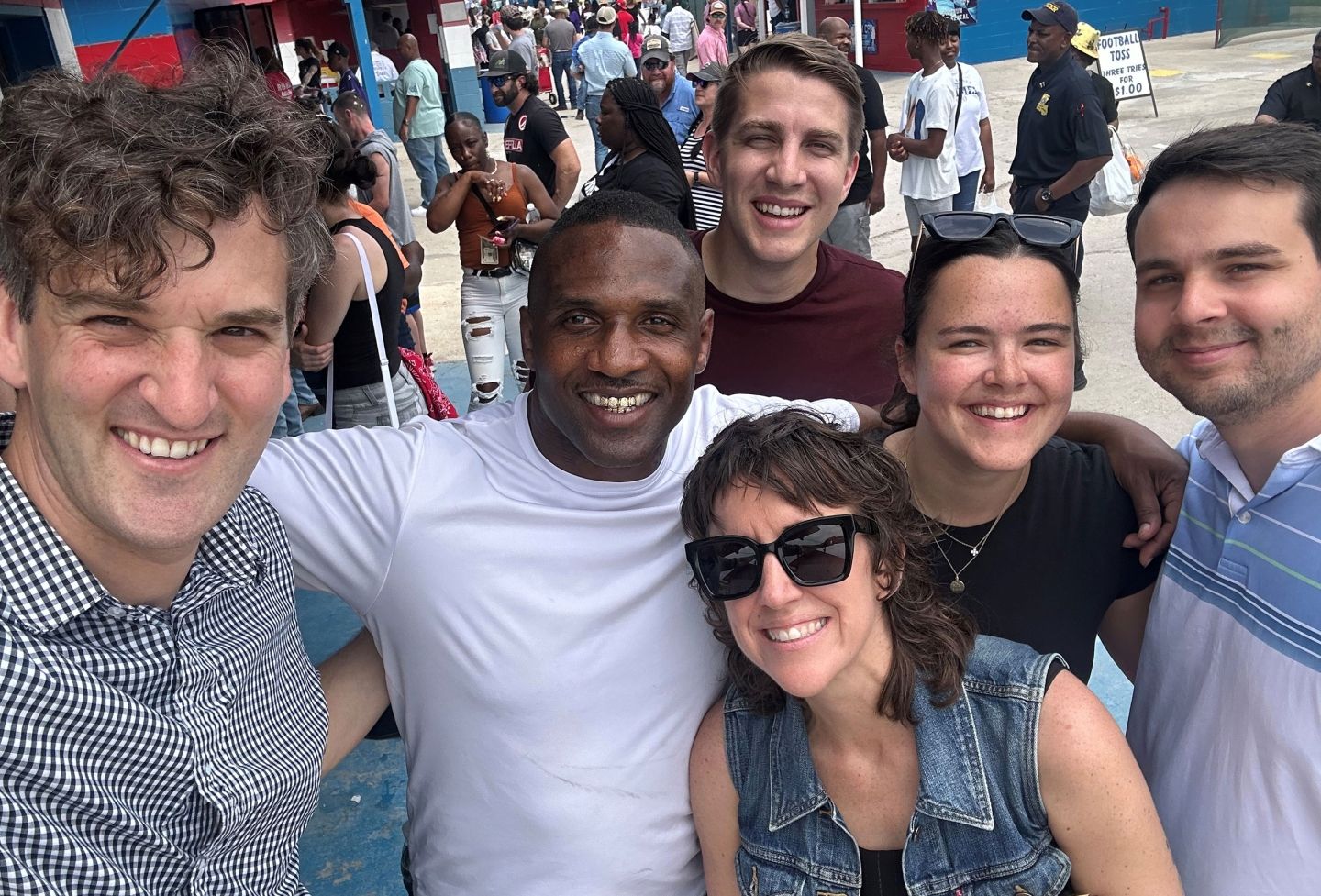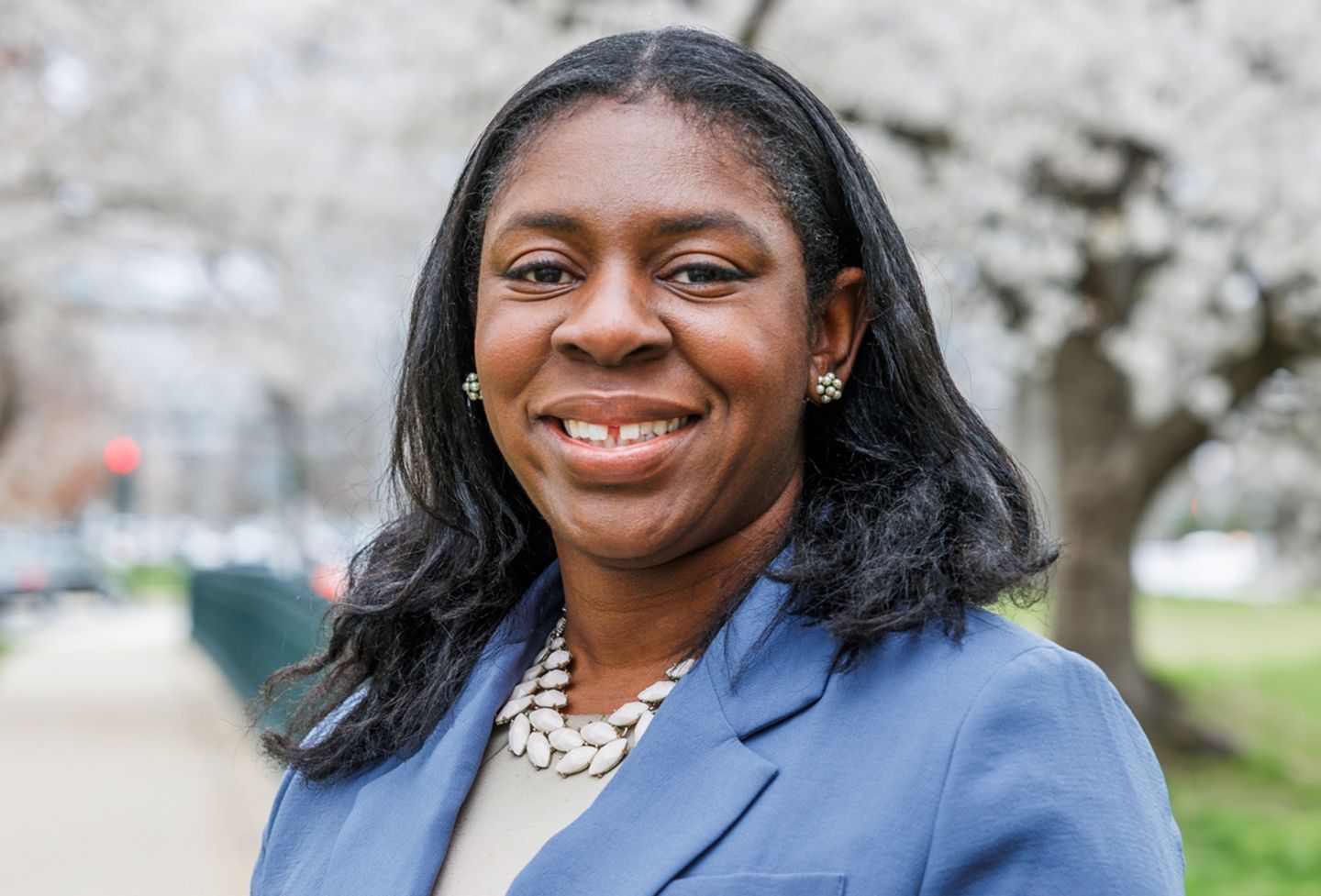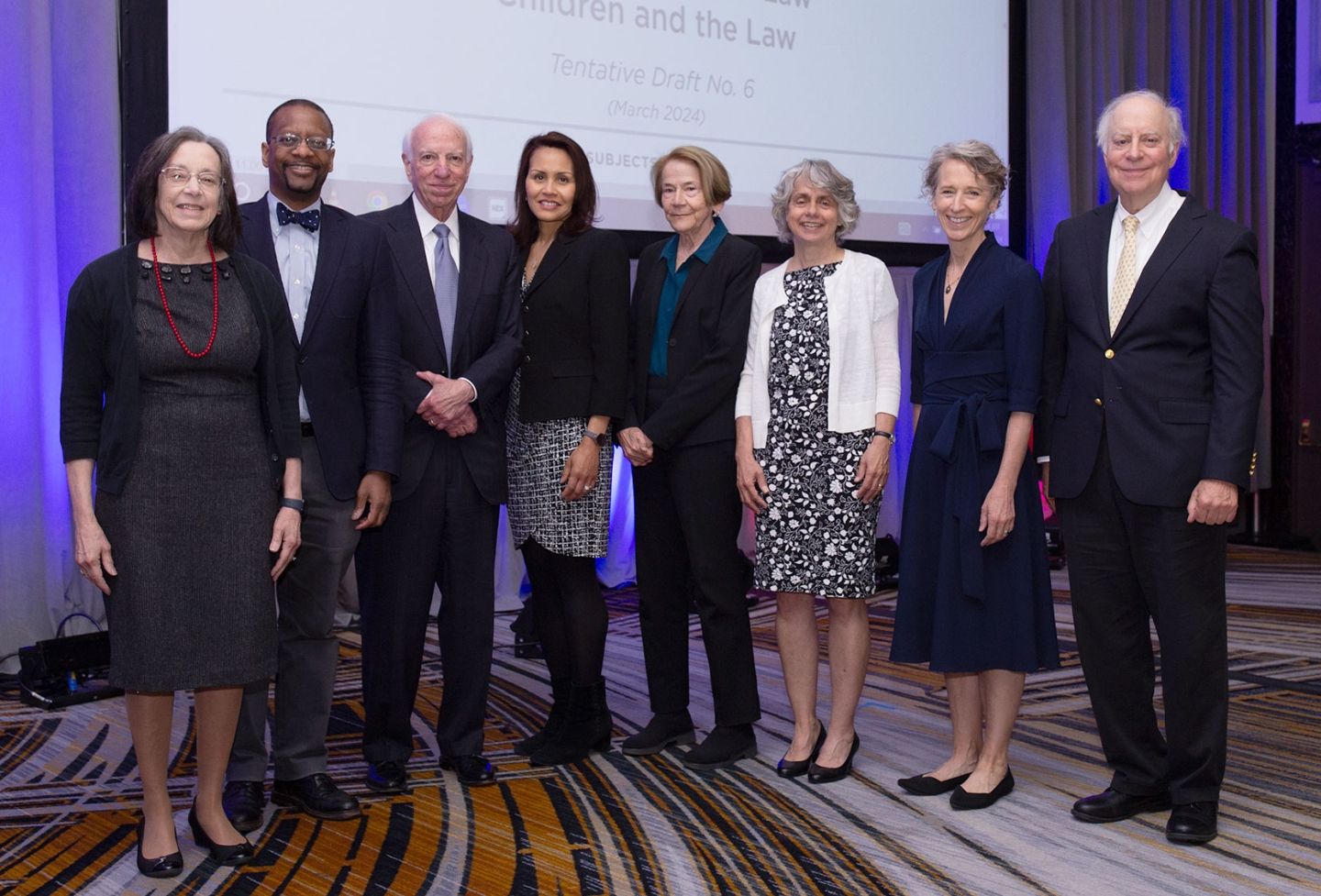Brown Helped Break Segregationist South, Greenberg Says
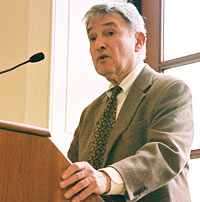
- Brown's Impact on Public Schools
- Brown and the Civil Rights Movement
- Brown's Impact on Constitutional Theory
Greenberg compared the political landscape before Brown to a frozen sea. Southern senators controlled House and Senate committees, and they depended on suppressing black votes to maintain power." Brown was like an icebreaker that broke a pathway through that frozen sea," he said. He called the results of Brown "mixed" today — we have 40 black congressmen, but black unemployment is double that of whites; there are 10,000 black law students across the country, but black male longevity in Harlem is less than in Bangladesh." But before 1954 the picture was unmixed," he said. "Brown opened the path for the frozen sea to help make the successes possible, but even the path through the frozen sea contains ice floes and ice bergs."
Plaintiffs who sought justice in the five cases comprising Brown for the most part just wanted a better education for their kids, Greenberg said. "I don't think we ever filed a case to make a political point," he said. "There may have been political points coming out of the case."
In the build-up to Brown, LDF cases forced law schools to accept blacks and successfully challenged "white primaries," which prevented African-Americans from voting. "They were building blocks in fashioning a legal regime of full equality.
"There was no overall scheme," he added. "While not ad hoc, it was an effort to use resources where they would be most effective in kind of an impressionistic sort of way."
At the time, some said the LDF should press for equalization rather than integration, but "those were voices that were few and far between in what could loosely be called the civil rights community." The LDF initially sought court orders requiring equalization, "but that was not the final goal." Even when courts ordered schools to have equal white and black schools, schools were not equalized. "They just had to keep going back to court again and again," Greenberg said.
"The debate over whether to seek separate but equal was over long before I came to work at the Legal Defense Fund in 1949," Greenberg said. "Until 1950 the lawyers tactically, at least, did not press for it."
Greenberg worked with Harvard Law graduate Louis L. Redding, an African-American lawyer who practiced in segregated Delaware, on the case Gebhart v. Belton, which became one of the five cases included in Brown. Redding hated segregation, Greenberg said; he worked in Delaware, but wouldn't live there or visit on the weekends. Their case revolved around a woman who had to drive her daughter to school because no transportation was provided for blacks. "She just wanted her child to ride the white school bus," he said. When Redding said he would only sue if the goal was integration, "she readily agreed.
"Probably most plaintiffs did not start out seeking integration, but all agreed to go along," he said. "We the leadership wanted an end to segregation."
The LDF focused its strategy on schools because government employers had an impenetrable set of rules and a far-reaching effect could not be expected, and similar problems would result if the strategy focused on housing, which was mostly private. "Schools on the other hand, were clearly state action, and covered large units.
"We hoped to have school segregation declared unconstitutional," he said. "I have to confess we did not think beyond that." If successful, they suspected that all state-sponsored segregation would end as a result.
Although there was "not a lot of speculative talk" among the lawyers about the decision, Greenberg said he suspected the Supreme Court would support black aspirations. When the decision came down in their favor, he said "I was surprised and I assume others were too."
Even with Brown, schools integrated slowly or not at all. African-Americans faced challenges in trying to get into higher ed into the 1960s, let alone secondary and elementary schools. "Nobody expected immediate compliance," he said. After Brown, Thurgood Marshall noted there were 200 countries in Georgia-and the LDF would have to file a school desegregation case in each one.
The Southern whites' backlash on many fronts-including decisions to close schools rather than allow blacks to enter and attempting to get integrationist lawyers disbarred-caught the NAACP lawyers off guard. "We had not anticipated anything like that … Nor had we anticipated interminable litigation in each case."
Brown II, handed down by the Court in 1955, ordered schools to desegregate with "all deliberate speed." Greenberg said he doubted whether the wording of the decision caused a greater backlash from segregationists. "It is the underlying racism that was at fault," he said.
African-Americans who did integrate registered an immediate jump in academic performance, he said, noting that black children do better in integrated settings that prepare them for the working world as well.
Greenberg said his understanding of the case changed radically this past summer when he observed the integration of the Romas, or gypsies, in eastern Europe, where they historically have been discriminated against and faced segregation in a fashion similar to African-Americans.
The European Union's equivalent of Brown was the Race Equality Directive, which required countries to integrate schools for admission into the Union. "It just blew me away," he said of the integration process. "It was working smoothly." In Bulgaria, social workers visited every Roma family, tutors were provided for children who needed them, the government promoted inter-cultural associations, and residents praised what was happening. There's still some prejudice against Romas in eastern Europe, and litigation is ongoing in some cases about school integration or equalization there, he added.
After the experience in Europe, "I perceived that Brown could not have accomplished what it should have accomplished unless it had been within a political environment that was receptive," he said. "Brown had to create the environment in which it could work. It was not decided in such an environment.
"The Supreme Court in Brown set a moral standard," while southern states defended segregation, cast it as a federalism issue, and put up physical resistance. When their uprising was crushed in Little Rock and other locations, "it became clear they could not succeed in a physical war against the rule of law."
"This was the predicate for the Civil Rights Acts of the sixties," he said. "I won't say it wouldn't have occurred without Brown, but it wouldn't have occurred when it did, and possibly not until a generation later."
When President Lyndon Johnson signed the Civil Rights Act of 1964 he mourned that the Democratic party would lose the South. "He was right, but it also meant the death of a political regime that upheld racism," Greenberg said. "So Brown was a success in bringing the country … into a period of our own Race Equality Directive."
Part of the relapse in recent years into segregated schools is due to Supreme Court decisions ruling that desegregation ordinances are no longer necessary once a school system has been desegregated once, Greenberg said. The No Child Left Behind Act allows for school transfers, but not across district lines, so segregation can still occur between districts, but "the most daunting problem is city suburban integration.
"What is most important is a national will to do something about education," he said. Greenberg proposed an amendment to the Act that would require national or state commissions to impress upon the public the importance of integration, an arrangement to encourage suburban integration as a "patriotic duty," and the funding to do so.
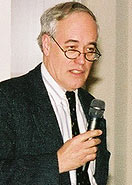
Brown's Impact on Public Schools
School segregation decreased following the Brown decision and the Civil Rights acts of the 1960s until it was checked by what Harvard University professor of education and social policy Gary Orfield called "hostile presidencies" Nixon and Reagan "and the only explanation [for the success achieved] is that the courts did it.
"The evidence is that the courts are powerful when they have powerful policies," said Orfield, who added that "public opinion favors more action to integrate schools."
Segregation declined until recent years. In 1968, 80 percent of blacks attended intensively integrated schools but by 1988 the figure had dropped to 20 percent. "The South is the most integrated region, but it's going backward rapidly now," Orfield said.
After 1991 all regions of the United States became more segregated "because of authorization by the Supreme Court," he said, referring to its 5-to-4 ruling on Milliken v. Bradley, a 1974 decision that said that segregationist practices in one district do not warrant relief that involves non-segregating districts, thus stopping remedial efforts at district boundaries and checking the possibility that suburban students would be bussed into cities.
"Milliken is the great tragedy in school integration," Orfield said. "Re-integration is driven by residential segregation."
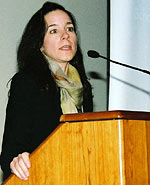
What segregation was accomplished happened on white terms, according to Amy Stuart Wells, professor of Sociology and Education at Columbia University Teacher's College, whose study of the Class of 1980 from six high schools across the country looked at the impact of integrated schools on the first children to experience it from kindergarten through high school.
"Local politicians tried to make desegregation palatable to whites," Wells said.
She told the story of how when two schools consolidated, the formerly white school would not allow the students from the formerly black school to display their trophies in the new school. The controversy ruined black hopes that the new school represented progress on race relations.
Whites were not interested in discussing race matters in the schools, they contended that they were being colorblind in their behavior and policies, and there were no curriculum changes. Whites, she said, still got better access to honors classes and gifted programs.
The Class of 1980 did report making cross-racial friendships that included contact outside school, Wells reported. They feel that what they learned about race is very important to them but that the society they entered after graduation is less integrated than their school was. The study showed that whites from integrated schools are less fearful of blacks and blacks reported feeling "better equipped with survival skills for the white world." Both feel they are less likely to be taken in by stereotypes about people.
Black parents learned that even though integration happened on white terms, black children are better off in white schools because "green follows white," meaning that schools with whites are more likely to be well-funded, Wells said.

Progress was not better because the Supreme Court did not advance the right rationale in making the Brown decision, said Indiana University law professor Kevin Brown.
"Brown forced the Supreme Court to define the harm done by segregation and they found psychological damage inflicted only on blacks," he said. "The road indicated but not taken is that the psychological harm is to both races. If the court had recognized this they would have proclaimed that it was not for the benefit of black children but all children.
"A minority group develops guilt feelings to defend itself from their sense of inferiority; whites were harmed by being taught the false message for their own superiority," he said.
Whites' built-in advantage in society is taken as evidence of superiority, he contended.
He said the white applicants who challenged the University of Michigan 's selection policies were the beneficiaries of 500 years of oppression of blacks; the right decision would not merely have left existing policies intact but have expanded them. In the Court's decision on Grutter, it reaffirmed "the commonly held belief that standards have to be compromised in order to enroll blacks," Brown lamented.
"Society should not be blind to continuing discrimination," he said.
Pointing to Brown's unintended consequences, U.Va. law professor James Ryan said Brown helped make the use of vouchers in religious schools possible.
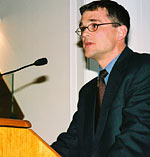
More private schools were formed and grew in the South after the Civil Rights acts of the 1960s, making a dramatic increase in a decade, he said. Ryan quoted one school founder who said he would have never dreamed of starting a school had it not been for bussing. The desire to avoid integrated schools coincided with some parents' feelings that schools were also becoming godless. This led to affiliations between schools and churches such that schools that started as segregation academies morphed into Christian academies. Since Catholic immigration began in the 19 th century, Protestant elites had strictly opposed public support for private schools and even into the late 1960s the term private school was a virtual euphemism for Catholic school, since 90 percent of private-school students at the time were in Catholic schools. But when Protestant evangelicals were faced with the need to support their own schools "they flipped, did an about-face," Ryan said, and they formed alliances with Catholics to get public money. That goal was abetted by a perceived decline in the academic performance of public schools, so that when the Supreme Court was asked to allow vouchers, they could be seen as neutral with respect to religious denominations. "Southern resistance finally won the war," Ryan said, "because vouchers are allowing resegregation." He said an ironic twist of choice programs is that they could improve integration by allowing parents to choose to send their children to integrated schools.
Ryan said Milliken "reflects and augments suburban power and represents a suburban veto to make sure their schools stay separate from urban schools."
Polls show high school students are 75 to 80 percent positive about attending integrated schools and also show improvement the attitudes of white parents about having their children in integrated schools.
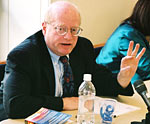
Brown and the Civil Rights Movement
Brown's litigation campaign helped liberal lawyers and interest groups realize that it was possible to advance individual cases alongside political ideals, said Georgetown University law professor Mark Tushnet during a panel examining Brown's effect on the Civil Rights movement. The NAACP Legal Defense Fund's campaign against the death penalty in the early 1970s offers an example of such an attempt to change policies through litigation of individual cases.
Brown exists as an image of the culmination of strategic litigation, but lawyers have to consider their clients' interests, Tushnet said. This can be problematic if the lawyer wants to win to advance policies, but plaintiffs on death row "want to win on any grounds possible."
Lawyers generally are unable to control litigation campaigns for several reasons. "The opponents will offer attractive settlements," he said, and "second, you can win the cases in the lower courts and the other side may decide not to appeal." Death penalty opponents were winning case after case, "but only on statutory grounds," not on moral grounds. "It turns out the strategic litigation campaigns are not terribly cost-effective," he said.
Furthermore, "a great deal of this litigation has to be funded by the government itself," and the government can take away funds. Welfare-reform statutes eliminate all statutory grounds for litigation rights, except for constitutional grounds, which lawyers had already failed on, he said.
Strategic litigation campaigns were made possible by the new liberalism that emerged from the New Deal era, he said. President Franklin Delano Roosevelt's strategic use of the Supreme Court to weaken southern democratic opponents began the process of consolidating liberals. By the late 1940s and early 1950s, liberalism was seen as a package deal "if you were liberal on economic issues, you were liberal on social issues.
"The Court's decision [in Brown] continues the process that was initiated by Roosevelt 's economic program by attaching the African-American community to the Democratic Party," he said. Johnson's Great Society program, which stressed social reform and community values, further developed the new liberalism.
Brown and subsequent developments generated the southern counter-strategy of attacking the Supreme Court as judicial activists. This strategy repudiated the aspirations of the New Deal-Great Society order. In both the Rehnquist Court "through its decision to stop desegregation orders in Milliken(1976)" and the Warren Court, "we see the Supreme Court collaborating with the existing constitutional order."
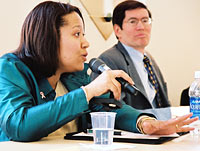
Scholar Kara Turner, an Assistant Dean for Administration in the College of Liberal Arts at Morgan State University, noted that plaintiffs in the NAACP's strategic campaign to end segregation may not have always been willing participants.
Before NAACP lawyers would act in the cases that made up Brown, they asked plaintiffs to agree to pursue integration, rather than equalization, of white and black schools. Turner alleged that the students of Prince Edward County, Va. didn't really have a choice, with disastrous results. The Prince Edward County school for African-American students was "physically very very inferior" to the white high school. Students had no cafeteria or gym, and no lockers. When the county put up new buildings to address black residents' concerns, they built tar-paper shacks, which strangers thought were "chicken coops rather than a school building." Student Barbara Johns led a walk-out to protest the conditions and contacted Richmond 's NAACP lawyers, who would only take the case, Davis v. County School Board, if the plaintiffs agreed to seek desegregation. "County residents were sort of hijacked," Turner said. The case became one of the five cases included in Brown.
After Brown, the county closed public schools for five years, while funding tuition grants for white children to attend private schools.
"Despite the concerns of some local blacks [about the pursuit of desegregation], few spoke out publicly," she said, partly because they admired the NAACP and because other lawyers were not qualified to take the case. In a Richmond Times-Dispatch interview several years later, more than half of the 19 plaintiffs said they were not supportive of the desegregation suit. Some were only recently aware they were even plaintiffs, she said, adding that they may have said that to avoid the still-present threat of reprisal.
Turner argued that events might have worked out less tragically "if the black community itself had been able to decide whether to pursue equalization or desegregation."
When the county failed to desegregate after 1995's Brown II decision ordering schools to desegregate with "all deliberate speed," NAACP lawyers appealed and the United States Court of Appeals for the Second Circuit ordered the county to set a "reasonable start" date for integrating schools. When the lower court set a start date of 1965, the appeals court ordered the desegregation to start that year. But in 1959 the Board of Supervisors adopted a budget with no funding for public schools and changed the locks on school doors. The 1,700 students locked out 'have been called the crippled generation and the lost generation, both apt descriptions." About 300 were able to go to school elsewhere during the five years.
Many who lost five years dropped out when schools reopened, finding that they were hopelessly behind; others graduated but felt they couldn't make it in college. Some questioned their self worth, because whites would rather close schools than attend alongside them.
"They took something from me that could never be replaced, except by disgust and hate," one former student later said.
The county suffered some repercussions; no new industries were established there during the period because there were no schools for potential employees' children. From 1960-64 the NAACP represented county students in a number of cases, challenging whether the county could help finance private schools, for example. In 1964 the Supreme Court finally handed the lawyers a victory and the district court ordered schools to open. However, only $189,000 was budgeted for public schools, while $375,000 was given to whites for tuition grants, sending an "unmistakable statement to blacks."
Turner said whites didn't return to public schools in Prince Edward until the 1980s. Black test scores still lag behind whites', they are disproportionately placed in special education classes, and they are rarely found in honors classes.
Asked whether any lawsuits have sought reparations for the affected students, Turner said no one has tried yet, but "I think it's a very clear-cut case." Black residents recently had to pay $300,000 to buy the school students walked out of; they made it a civil rights museum when the county refused to do so.
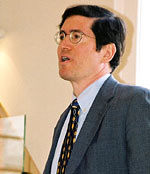
U.Va. law professor Michael Klarman challenged the view "that in some significant way Brown created the Civil Rights Movement." The court is never the vanguard in social causes, Klarman said.
The Supreme Court had several reasons to strike down segregation by 1954. African-Americans had fought for their country in World War II and expected more rights; politicians were increasingly bidding for the black vote in the north in the 1940s; Jackie Robinson entered major league baseball in 1947; the military and civil service desegregated in 1948; and the United States was struggling against the Soviet Union for the loyalty of the developing world, and "racial discrimination produced grist for the Communist manuals."
Justice Felix Frankfurter noted, "The pace of progress has surprised even those most eager in its promotion."
But " Brown forced people to take a position on school desegregation, which none of them had done before," Klarman said. Many moderate southern politicians could not be moderate on desegregation, or else lose their job. Northern politicians voiced support for Brownbut were unwilling to enforce it. Whites made up their minds "without taking instruction from the justices." Polls revealed no large attitude shift as a result of Brown; a 5 percent increase in support of the ruling seen in 1959 could have been influenced by extra-legal forces, Klarman said.
Still, "Brown was of enormous symbolic importance for African-Americans," because it convinced them change was possible. "There's no doubt that Brown facilitated the motivation of civil rights protests." Just signing a petition to desegregate schools became an act of protest. "Brown clearly prompted southern blacks to challenge Jim Crow more aggressively" than they might have otherwise, Klarman said.
However, the evidence for Brown acting as a "spiritual father" for civil rights protests is weak, and in the short term the decision may have discouraged direct-action protest in favor of litigation, as the dearth of protests from 1954-60 reveal. "After the NAACP's inspiring victory, perhaps most blacks were inclined to see in the short term what litigation could deliver," he said. In the long-term, Brown may have encouraged direct-action protests by dashing the hopes raised by initial success in litigation.
In the meantime, white southern backlash stifled the litigation movement. Following Brown,hundreds of NAACP branches closed in the 1950s because of the backlash; some NAACP lawyers had their homes fire-bombed and faced numerous other threats. Other organizations like Students for a Democratic Society sprang up to fill the gap, and by the time southern white violence was broadcast everywhere in the early 1960s, "southern whites were due to lose the battle for public opinion," Klarman said. "Brown may have directly fostered violence against southern blacks."
Southern politicians indirectly encouraged such violence. Birmingham police commissioner Bull Connor unleashed police dogs and fire hoses against peaceful black protestors. Connor had actually been pushed out of office by a sex scandal in the early 1950s, after which the city had made progress on race, including building the first hospital for blacks there. Connor made a political comeback after Brown, and protest organizers picked Birmingham in particular because they suspected the commissioner would overreact.
George Wallace similarly became a "die-hard segregationist" after Brown and won the governorship in 1962 (after failing as a moderate in 1958) on a promise to block the doors of schools from integration. After blocking doors in locations across the state, Wallace backed down when he was threatened with judicial contempt by five courts, but soon after a black church was bombed and he received the blame. Northern congressmen then introduced measures to make the Civil Rights bill more aggressive.
Brown brought "to surface the violence that always lay at the core of white supremacy," Klarman said. "Brown was less directly responsible for putting protestors on the street and more directly responsible that they received a violent reception."

Brown's Impact on Constitutional Theory
Brown demonstrates that the Supreme Court deliberates and rules within the prevailing national political context and is not a lead agent of social change, according to a panel of leading constitutional historians and theorists.
One lesson of Brown for constitutional theory is about the difficulty of predicting and controlling the future, said U.Va. law professor John Harrison.
"The American judiciary is not the most faithful agent any one has ever had. At various points they have defeated the expectations of the framers." They have strong opinions of their own and they think about the political situation in which they are making the decision. "They think like politicians about what is possible," he said.
The courts' fidelity to the framers' intentions and text "will vary according to the felt importance of the issue," Harrison said. The more "hot button" the issue, the less likely the court is to adhere strictly to the Constitution's text.
Thus the fate of amendments "generally relies pretty strongly on judicial enforcement," he said, and so the amendments' texts need "strong clarity." Of the Reconstruction amendments, the 15th "had a happier history than the 14th because it was a lot clearer than the 14th. The framers of the 14th drafted at a high level of abstraction, which meant they were less successful."
Texts also profit from having "an entrenched provision," he said, something that draws a clear boundary and which typically also offers political leverage in deals with opponents.
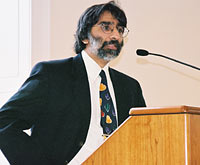
Judicial behavior over the Reconstruction amendments was also suspect for Akhil Amar, a Yale University law professor.
If the Supreme Court's decision to repudiate Jim Crow laws affecting education was right, then why did Brown take so long to happen, he asked.
"The 13th Amendment gets rid of slavery forever," Amar said. "Congress has the power to get rid of all it badges and relics," including forms of discrimination that do not connect directly to slavery, he said. "Congress had broad power to enforce the Reconstruction amendments and if Congress had done what it should then Plessywould have been a pre-emption case."
Nor did the courts enforce certain provisions that they should have. "Think about what the world would be if the Supreme Court had enforced them."
Amar said the framers of the 14th Amendment saw the equal protection concept as implicit in the due process of law guarantee contained in the Fifth Amendment. The 14th Amendment expressly named the states because earlier Supreme Court decisions had said that such explicit terms are necessary.
"Laws that disadvantage one race are inherently unequal. By 1954 it was clear to everybody that race discrimination is inevitably unequal," Amar said. "If you have to choose between separate and equal, the Constitution says to choose equal."
Amar said the Constitution should be considered holistically and lamented a general public ignorance about its provisions. "Individual clauses are nested in larger structural patterns," he said. "The 14th Amendment is inherently integrationist and says all citizens should be able to serve in legislatures and on juries," he said as an example.

According to Yale University law professor Jack Balkin, the main lessons of Brown for constitutional theory are about what he called "positive theory," meaning statements about "how the machine works." The first of those is that "the federal courts are not counter-majoritarian," he said, "but they do respond to national elites and values over regional ones. By 1954 the national majority thought Jim Crow was wrong and the elites thought it was an embarrassment," especially since segregation laws gave the Soviet Union propaganda ammo in the competition for third-world support. Similar changes happened with Lawrence v. Texas and Roe v. Wade, Balkin said, when national majorities decided they didn't want sodomy laws any more, in the first case, and that abortion was a matter for a woman and her doctor to decide.
The second lesson is that "courts are bad at tackling but good at piling on." The real heroes of the reform movement were Jackie Robinson, for daring to be the first black baseball player in the major leagues, and Harry Truman for integrating the armed forces, he said. The court was joining the movement more than it was leading it.
Another lesson is that courts tend to protect minorities as much as majorities want them to. "Wallace and Nixon appealed to white resentment that things were changing too fast,' Balkin said. Thus Milliken "gave a pass to suburban school districts. You get the interpretation that is acceptable to majority views," he said. "Minorities need to show majorities how change is in their interest."
"At the end of the day it's about where the votes are," summed up Amar.
Founded in 1819, the University of Virginia School of Law is the second-oldest continuously operating law school in the nation. Consistently ranked among the top law schools, Virginia is a world-renowned training ground for distinguished lawyers and public servants, instilling in them a commitment to leadership, integrity and community service.
